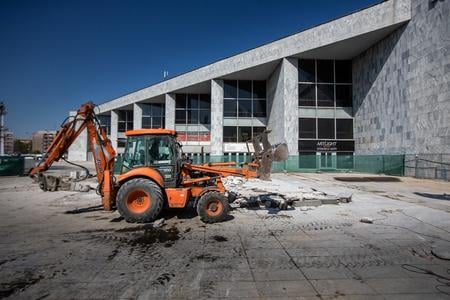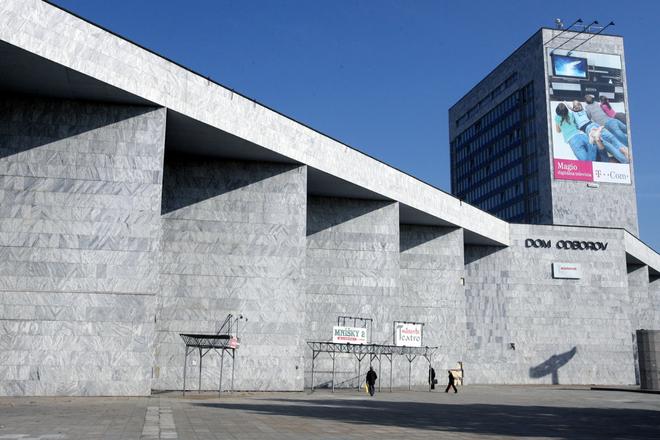To read and see in this article
-Visualisations of the new development and how this venue looks today
-What architecture historian think about the Nový Istropolis project
-Plans to build the National Cultural and Congress Centre in Bratislava
For some people, Istropolis in Bratislava, the former House of the Trade Unions originally designed to host the congresses of the Communist Party, is an unusable symbol of the previous totalitarian regime. For others it is quality architecture, even though neglected.
Its owner, the developer Immocap, wants to raze it and build a new venue encompassing a culture and congress centre, shops, offices and flats. After 2.5-years of preparations, on July 17 the developer unveiled plans for one of the most anticipated developments in Bratislava.

“Our intention is to turn the now dead and dysfunctional zone at Trnavské Mýto into a vital district full of culture, greenery and public spaces,” said Martin Šramko, CEO of the development company Immocap, when presenting their vision of the new cultural and social centre Nový Istropolis on July 16.
Immocap is behind the reconstruction of the Trnavské Mýto underpass and construction of the Central shopping centre with adjacent hotel and office tower.
Istropolis
Istropolis, the former House of Trade Unions, is a complex that encompasses a culture and congress centre, an office tower, a theatre, some other adjacent buildings and a science centre, the only one not owned by Immocap. The venue features the biggest congress hall in Slovakia with capacity for 1,280 people, originally designed to host the congresses of the Communist Party.
The complex designed by architects Ferdinand Konček, Iľja Skoček and Ľubomír Titl is located in a lucrative location at the edge of the city centre. Trnavské Mýto is now one of the most important traffic points in the city.
After the razing of the Park Kultúry and Oddychu (PKO) cultural, social and education venue on the Danube embankment several years ago, Istropolis is one of the few places in Bratislava where large concerts, conferences and cultural events can be held.
In the last few years it has suffered from lack of investment and maintenance, falling into disrepair. Since opening in 1981, the complex has not undergone any overhaul and has not been adapted to a cultural and congress centre that meets current requirements.
The plan to raze Istropolis has raised criticism by architecture historians, calling for keeping it and holding an open discussion on its future with experts and the general public.


 Istropolis (source: Sme)
Istropolis (source: Sme)